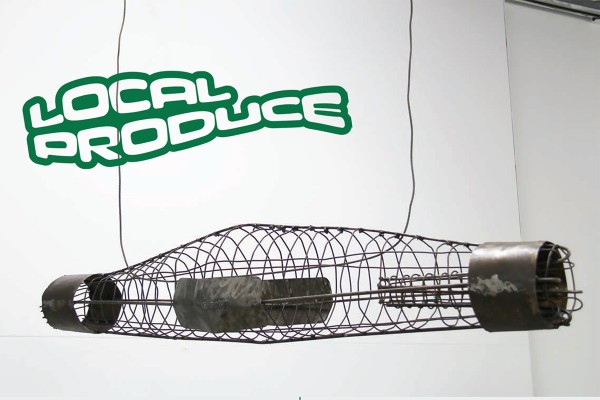Ko Maukatere tōku mauka
Ko Waimakarere tōku awa
Ko Tākitimu tōku waka
Ko Kāi Tahu tōku iwi
Ko Ngāi Tūāhuriri tōku hapu
Nō Ōtepoti ahau
Ko Aidan tōku Ikoa
Aidan (Kāti Māmoe, Waitaha, Kāi Tahu) is currently in his final year at the Dunedin Art School. He moved to Ōtepoti when he was fourteen. “I’ve spent my entire adult life here, so that’s why a lot of people presume that I whakapapa to Dunedin. And I do…I’ve got ancestors that have come from Otakou and Puketeraki marae. So I can trace my lineage back here which is awesome. I find myself quite grounded in this cultural ethos.” Sculpture is his primary art form, though he has also worked across illustration, street art, graffiti and design. His art has often connected him to his Māori identity and whakapapa, a connection that he has honed studying at OP. His major second year project focused on the degredation of awa in the Canterbury region, swimming holes that were familiar to him from visits growing up. This year, his work has become more reflective, as to where he fits into the fabric of Aotearoa history and society. “My art practice now engages with the urban Māori, the whole ethos around the displacement of Māori whānau after the Second World War, when the men came back and found the whenua had been swept up from underneath them.”
Aidan’s creative journey to this point on the surface may look unexpected. As a child, Aidan would accompany his mum to her art classes at AUT Art School. Sketching classic cars was a memorable interest of his growing up. “I’ve been a bit of a bogan my entire life, so I always just drew cars. Like Australasian muscle, V8s, Commodores, Falcons. It’s real funny, it’s a massive change to what I orient myself around with my art practice at the moment.” Now, Aidan attributes those interests to his urban Māori identity. Growing up in the Glen Innes suburb amongst state-housing and poverty, he was aware his whole life of the lingering effects of the intersecting forces of systemic racism and the displacement of Māori away from their Māoritanga. “That car culture can attribute itself towards this identity of the bogan…it’s a very urban motif.”
In an incredible achievement, Aidan has been invited to contribute a sculpture to the university campus. Hei Maumaharatanga is currently being installed between the Leith footbridge and the psychology department. In English, this roughly translates to ‘In Remembrance’. “It was a work that evokes the notion of Māoritanga in the environment…it reflects upon the history that not just Māori have with the whenua, but the connection that we all share with the displacement of the Second World War. A lot of families who have been here for a couple of generations have been affected in some way.” The work incorporates Māori motifs and elements, particularly rongoā tanē, properties of traditional Māori healing. The work also represents each individual Māori Battalion. “D is the battalion that I whakapapa to, ‘Ngati Walkabout’… The work itself is a place to collect and reflect in a positive manner. It’s cool, it’s real special.”
Aidan’s art will be featured at ‘Site,’ the upcoming Dunedin Art School end of year exhibition. “At the end of the day, my practice is an evocation of not just myself, but the people around me, the community that I find here in Ōtepoti. My practice would be very different if I had begun anywhere else. I probably wouldn’t have even gone down this path as an artist. So it’s Ōtepoti that really makes the work for me and the people that I surround myself with.”



